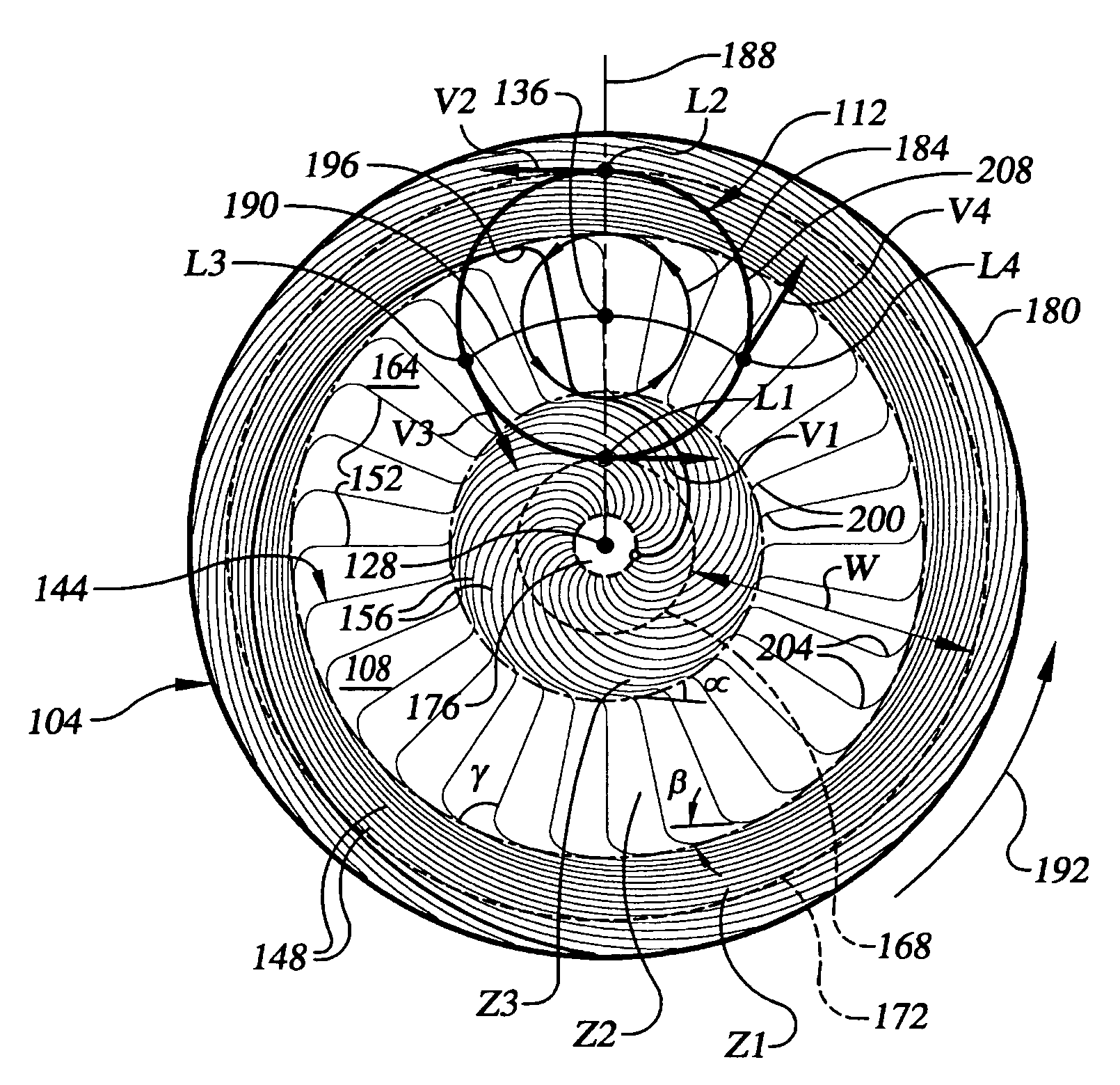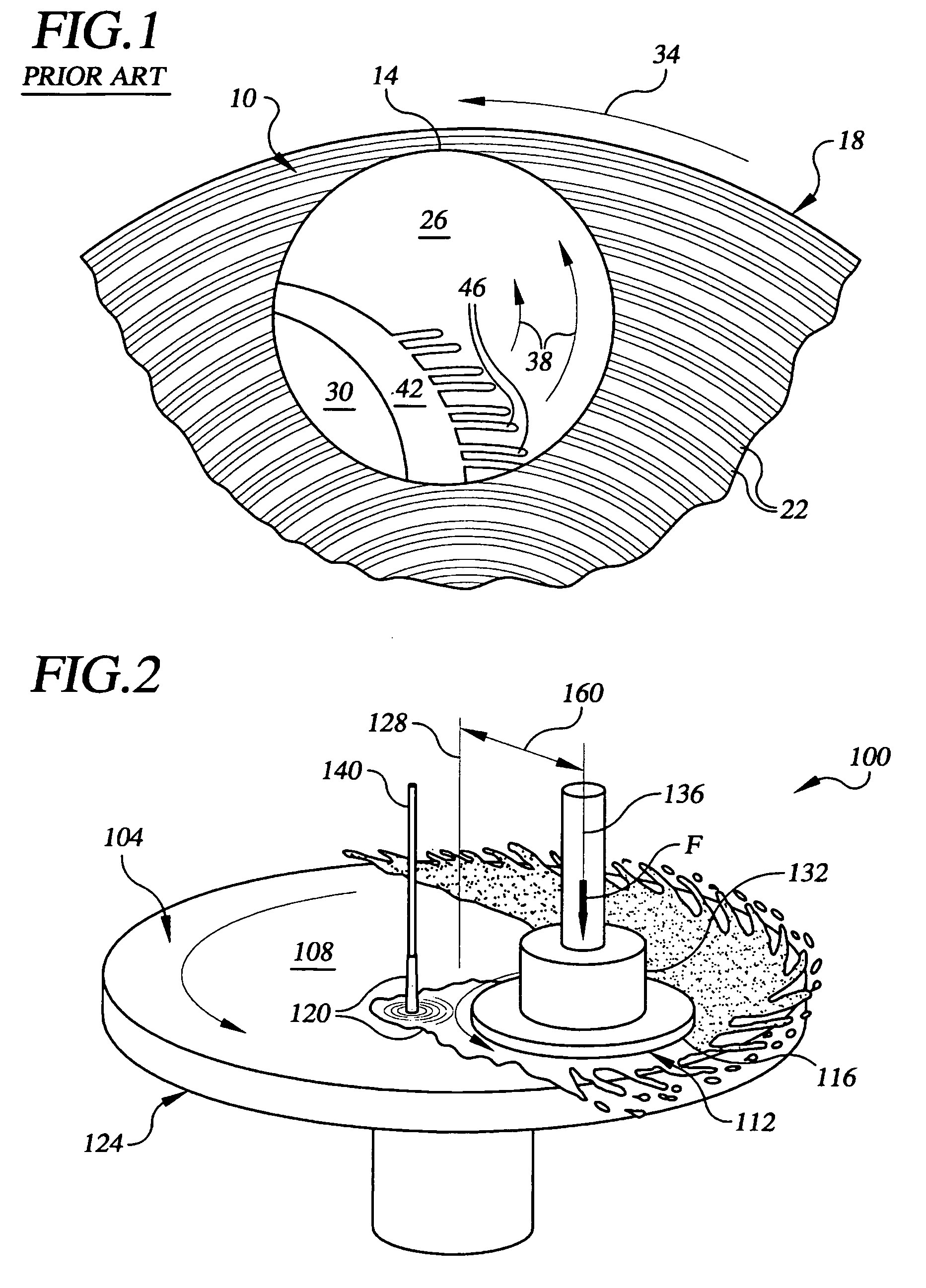Polishing pad having grooves configured to promote mixing wakes during polishing
a technology of mixing wakes and polishing pads, applied in the field of polishing, can solve the problems of significant variations in polishing conditions, undesirable mixing wakes, and unfavorable sharpness
- Summary
- Abstract
- Description
- Claims
- Application Information
AI Technical Summary
Problems solved by technology
Method used
Image
Examples
Embodiment Construction
[0016]Referring again to the drawings, FIG. 2 generally illustrates the primary features of a dual-axis chemical mechanical polishing (CMP) polisher 100 suitable for use with the present invention. Polisher 100 generally includes a polishing pad 104 having a polishing layer 108 for engaging an article, such as semiconductor wafer 112 (processed or unprocessed) or other workpiece, e.g., glass, flat panel display or magnetic information storage disk, among others, so as to effect polishing of a surface 116 (hereinafter referred to as “polished surface”) of the workpiece in the presence of a slurry 120 or other polishing medium. For the sake of convenience, the terms “wafer” and “slurry” are used below without the loss of generality. In addition, as used in this specification, including the claims, the terms “polishing medium” and “slurry” include particle-containing polishing solutions and non-particle-containing solutions, such as abrasive-free and reactive-liquid polishing solutions...
PUM
| Property | Measurement | Unit |
|---|---|---|
| Time | aaaaa | aaaaa |
| Angle | aaaaa | aaaaa |
| Angle | aaaaa | aaaaa |
Abstract
Description
Claims
Application Information
 Login to View More
Login to View More - R&D
- Intellectual Property
- Life Sciences
- Materials
- Tech Scout
- Unparalleled Data Quality
- Higher Quality Content
- 60% Fewer Hallucinations
Browse by: Latest US Patents, China's latest patents, Technical Efficacy Thesaurus, Application Domain, Technology Topic, Popular Technical Reports.
© 2025 PatSnap. All rights reserved.Legal|Privacy policy|Modern Slavery Act Transparency Statement|Sitemap|About US| Contact US: help@patsnap.com



